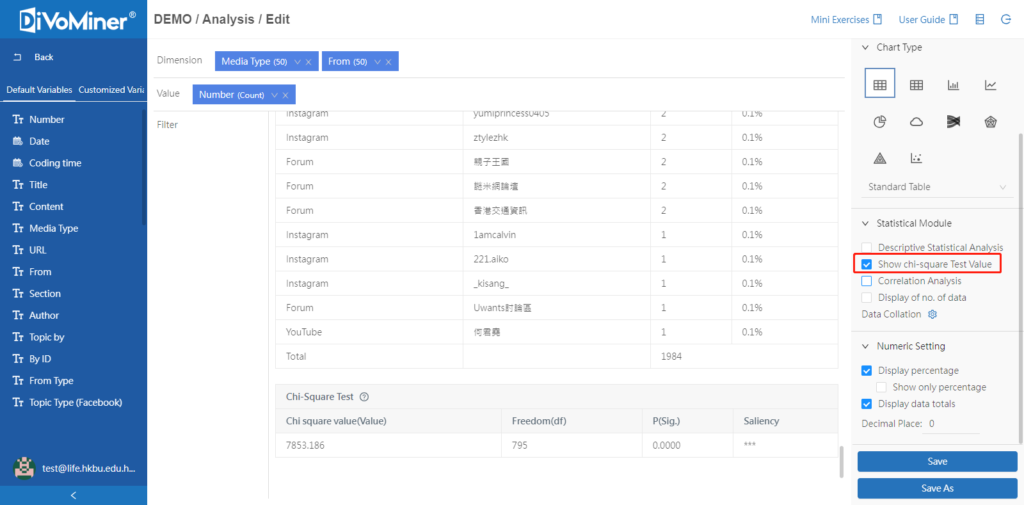Chi-square is a widely used method of testing relationships between categorical variables. It mainly assesses whether an association exists between the two (or more) variables by comparing the observed pattern of responses to the pattern that would be expected if the variables were independent of each other. the percentage of two or more sample categories (composition percentage) and the association test of two categorical variables. The basic idea is to compare the degree of agreement or independence between the observed frequency and the expected frequency.
The p-value indicates that if the variables are independent of each other and if there is a statistically significant relationship between the categorical variables. If the P-value is small enough, it means the observed value deviates too much from the expected value, indicating that there is a significant difference between the compared groups of data; otherwise, the actual situation (observed frequency) represented by the sample and theoretical hypothesis (expected frequency) are not considered to have a significant difference.
Significance marker ‘*’: P ≤ 0.05; ‘**’: P ≤ 0.01; ‘***’: P ≤ 0.001; otherwise, it’s shown as “not significant.”
Drag two variables into the “Dimension” field, and then one variable into the “Value” field. Select the chi-square test value in the Statistical Module to check the associations between the two variables in the “Dimension” field.

